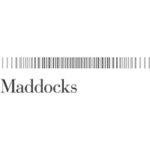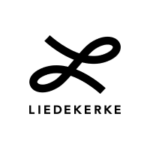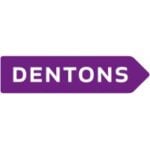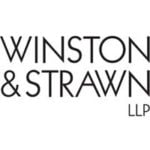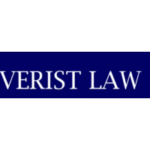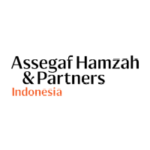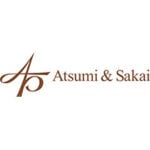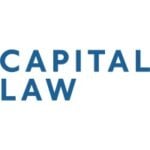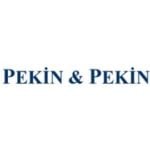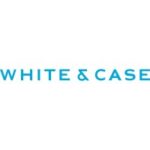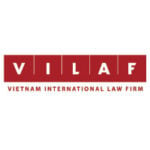-
Please briefly describe the regulatory framework and landscape of both equity and debt capital market in your jurisdiction, including the major regimes, regulators and authorities.
Swedish private and listed companies are subject to the Swedish Companies Act. For a company to be listed on a regulated market or certain trading platforms in Sweden, it must be a public company. The implementation of Directive 2004/25/EC on takeover bids (the “EU Takeover Directive“) provides protection for holders of shares listed on regulated markets and certain trading platforms through a combination of legislation and self-regulation. The Stock Market (Takeover Bids) Act (the “Takeover Act”) provides the basic framework for takeovers. Statutory rules are set out in the Financial Instruments Trading Act (the “Trading Act”), which governs the duty to provide information. The self-regulatory takeover rules issued by the Stock Market Self-Regulation Committee (the “Takeover Rules”) complement the statutory rules and contain specific provisions regarding, inter alia, the duty to provide information to shareholders and the procedures, and the terms and conditions for the bid. There are two regulated markets in Sweden – Nasdaq Stockholm and Nordic Growth Market (“NGM”). In addition, there are several multilateral trading facilities (“MTFs”) in Sweden, including First North Growth Market, NGM Nordic MTF and Spotlight Stock Market.
Both equity and debt (bonds) are financial instruments subject to Regulation (EU) 2017/1129 on the prospectus to be published when securities are offered to the public or admitted to trading on a regulated market (the “EU Prospectus Regulation“) and Regulation (EU) 596/2014 on market abuse (the “EU Market Abuse Regulation“). Both regulations apply as Swedish law. The Swedish Financial Supervisory Authority (the “SFSA“) and the stock exchanges are tasked with maintaining compliance. The Securities Council is authorised by delegation from the SFSA, Nasdaq Stockholm, and NGM to interpret parts of the Takeover Act and the Takeover Rules, and to grant exemptions from certain requirements. The Securities Council also issues statements in individual cases in relation to sound stock market practice. On 4 December 2024, the regulation of the European Parliament and the Council amending Regulations (EU) 2017/1129, (EU) No 596/2014 and (EU) No 600/2014 to make public capital markets in the Union more attractive to companies and facilitate access to capital for small and medium-sized enterprises (the “EU Listing Act”) entered into force. The EU Listing Act includes, inter alia, changes to the EU Prospectus Regulation and the EU Market Abuse Regulation aimed at enhancing legal clarity, addressing disproportionate requirements and increasing the overall attractiveness of the EU capital markets.
Although the deadline to transpose the EU Listing Act into national law is January 2026, certain provisions have applied since 4 December 2024, when the EU Listing Act entered into force. Notable provisions that have applied since 4 December 2024 include, in respect of the EU Prospectus Regulation, expanded prospectus exemptions, relaxed requirements for triggering prospectus supplements and third country equivalence of prospectuses. In respect of the EU Market Abuse Regulation, a notable change is the expansion of the circumstances where persons discharging managerial responsibilities (“PDMR“) can deal in securities during a closed period, and the threshold for the obligation for a PDMR (and persons closely associated) to notify their dealings will be raised from EUR 5,000 to EUR 20,000 within a calendar year. Another notable change, taking effect 18 months after the EU Listing Act came into force (i.e. 5 June 2026), is that the requirement to disclose inside information as soon as possible will not apply where the information relates to an intermediate step in a protracted process. Disclosure will only be required when the final step in the process is executed.
The main equity and debt markets are Nasdaq Stockholm (regulated), Nordic Derivatives Exchange (regulated) and Nasdaq First North Bond Market (MTF). Due to EU regulations, there is a degree of harmonisation of information requirements between the regulated markets and non-regulated markets/MTFs, but differences remain between governance and specific listing requirements. Each individual market has its own approval process for listing applications in relation to the issuer and the relevant instrument. The SFSA is the regulatory body that reviews prospectuses where applicable. In addition to the rules of the relevant market, the EU Market Abuse Regulation applies to bonds listed on the markets.
-
Please briefly describe the common exemptions for securities offerings without prospectus and/or regulatory registration in your market.
The EU Prospectus Regulation sets out the main regulatory framework and requirements to prepare a prospectus for public offerings. It applies to an offer of securities to the public and the listing of securities on a regulated market.
Under the EU Prospectus Regulation as supplemented by the Delegated Prospectus Regulation, offerings of securities to the public for which the aggregate amount is less than EUR 2,500,000 within a twelve (12) month period, do not require a prospectus to be prepared. Common exemptions, which are often combined, include, inter alia, (i) offers of securities addressed solely to qualified investors, (ii) offers addressed to fewer than 150 natural or legal persons per EU member state, other than qualified investors, (iii) offers of securities whose denomination per unit amounts to at least EUR 100,000 and (iv) offers addressed to investors who acquire securities for a total consideration of at least EUR 100,000 per investor.
As a result of the EU Listing Act, several existing exemptions in the EU Prospectus Regulation were expanded to include higher thresholds. For example, from 4 December 2024 the exemption to publish a prospectus where fungible securities are admitted to trading and they represent less than 20 per cent of the securities currently admitted to trading, was increased to 30 per cent over a twelve (12) month period. Another notable change following the EU Listing Act is that the threshold at which offerings of securities to the public are exempt from prospectus requirements will be increased from EUR 2,500,000 to EUR 12,000,000, as of 5 June 2026. However, member states may lower this threshold to EUR 5,000,000.
In certain cases where the obligation to publish a prospectus is exempted, the changes introduced by the EU Listing Act instead require issuers to file a so-called “Annex IX Document”. This document, which must not exceed 11 pages, must be submitted to the SFSA. However, it does not require approval from the SFSA. The contents of the Annex IX Document include, among others, a declaration by those responsible for the document that the information contained therein is in accordance with the facts, the reason for the issuance and use of the proceeds, risk factors, and the terms and conditions of the offer.
-
Please describe the insider trading regulations and describe what a public company would generally do to prevent any violation of such regulations.
Insider dealing is prohibited under the EU Market Abuse Regulation. When a transaction, either individually or in aggregate during a calendar year amounting to EUR 20,000, is executed, the PDMR must notify the SFSA. The notification must be made to the SFSA as soon as possible and no later than three (3) trading days after the transaction. PDMRs are prohibited from dealing in securities for a period of 30 calendar days prior to the disclosure of financial reports. An exemption from these prohibitions exists for companies in immediate financial distress. Member states may raise the threshold to EUR 50,000 or decrease it to EUR 10,000. As a result of the changes to the EU Market Abuse Regulation, the list of circumstances in which PDMRs can deal in securities during a closed period has been expanded to include, inter alia: investments that do not involve decisions or active involvement by the PDMR, result exclusively from external factors or third parties and dealings carried out on pre-determined terms.
It is important for listed companies to establish sufficient internal procedures for trading. Such procedures are usually directed at the PDMRs of the company, and it is important to clarify the personal responsibilities of the PDMR, including the requirement to inform closely associated persons of the PDMR that they also must adhere to certain requirements for trading.
-
What are the key remedies available to shareholders of public companies / debt securities holders in your market?
In Sweden, shareholders primarily exercise power through voting at the company’s general meetings. Shareholders have the opportunity to introduce topics for discussion during these meetings, and they can request that certain items be added to the meeting agenda. The scope for shareholders to bring matters to the table is quite broad. As long as the issue has been communicated to the company within the designated notification period before the general meeting and relates to the company’s activities, the board of directors is generally not permitted to refuse to discuss it.
The general meeting serves as the primary platform where shareholders can pose questions about the financial status of the company to the managing director and the board. It is expected that these inquiries will be addressed unless doing so would harm the company’s interests.
Minority shareholders also have significant rights in Sweden. Shareholders who hold more than 10 per cent of a company’s shares can request the convening of an extraordinary general meeting. This right also serves as protection against being forcibly bought out by a majority shareholder under a process known as a “squeeze-out.” Conversely, if an individual or group comes to own more than 90 per cent of a company’s shares, the remaining minority shareholders have the right to demand that their shares be bought by the majority shareholder.
Additionally, a shareholder can contest decisions made by the board. If a resolution passed by the board is found to be in violation of the law or the company’s articles of association, shareholders can challenge it. Such a challenge, if successful, can result in the resolution being invalidated. This is an important check on the board’s power, ensuring that it operates within the legal and established framework of the company.
-
Please describe the expected outlook in fund raising activities (equity and debt) in your market in 2025.
Sweden has an active capital market landscape and a vibrant and well-established private equity sector that is active both domestically and internationally. Sweden has one of the most active capital markets in Europe and Stockholm is an active player in the European markets and has attracted the highest number of new initial listings among its competitors in Europe during 2024. Furthermore, despite ongoing inflationary pressures, the Swedish krona has recently emerged as one of the strongest currencies among the G10 countries.
Recent geopolitical events have brought some uncertainty to global capital markets, and Sweden is no exception. Nevertheless, there remains sustained investor interest in Sweden. Furthermore, investor appetite remains strong in sectors where Sweden demonstrates global leadership. Technology, including fintech and software, continues to attract significant capital, as does renewable energy, supported by ambitious sustainability goals and Sweden’s ongoing green transition. Advanced manufacturing and industrial automation also remain prominent, leveraging Sweden’s engineering expertise.
This sectoral diversity helps to support Sweden’s overall market resilience and attractiveness, even in a global context marked by uncertainty.
-
What are the essential requirements for listing a company in the main stock exchange(s) in your market? Please describe the simplified regime (if any) for company seeking a dual-listing in your market.
The essential listing requirements for Nasdaq Stockholm are set out in the table below. Listing on Nasdaq First North Growth Market requires somewhat lower thresholds and overall a less rigorous approval process.
Free float 25 per cent* (will be decreased to 10 per cent as a result of the EU Listing Act once amendments to MiFID come into force). Market value The shares must have a market value of at least EUR 1 million. Number of shareholders At least 500 owners holding shares with a value of at least EUR 500. Financial history and Business operations The issuer must have published or filed annual reports for at least three (3) years. IFRS/IAS must be applied. Profitability must be demonstrated for at least the latest financial year.
If earnings capacity cannot be demonstrated, the issuer must show that it has sufficient working capital available for its planned business for at least twelve (12) months after the first day of trading.
Prospectus Risk factors, information on organisational structure, the issuer’s operations, intellectual property, board, management, major shareholders and information on the issuer’s assets and liabilities, financial position and results. The prospectus must be approved by the SFSA.
Due diligence There is a requirement for issuers to undergo a legal review (due diligence) to ensure that the issuer meets stock market soundness requirements. This review forms the basis of the auditor’s assessment of the issuer and is important to limit exposure for the issuer’s board, as the board is responsible for the content of the prospectus drawn up for the listing.
Listing auditor The listing auditor must assess whether the issuer fulfils the admission requirements and whether it would be appropriate to approve the issuer’s shares for admission to trading on the exchange. Disclosure obligations The board and the management must complete a special training arranged by Nasdaq or legal counsel prior to listing. The training includes information provision requirements applicable to listed companies. In addition to the information requirements under the EU Market Abuse Regulation, the issuer must:
– publish its intention to apply for admission to trading on Nasdaq Stockholm;
– when making forecasts, provide information regarding assumptions or the conditions on which the forecast is based on. When making forward-looking statements, the issuer must provide such information in a clear and consistent manner;
– maintain an information policy – this must be worded and structured in a way that ensures compliance with the policy is not dependent on one person;
– possess the organisation and staff to manage financial reporting in order to comply with the requirements regarding disclosure of information to the market; and
– maintain routines and systems for provision of information, including routines for financial reporting, such as:
o having the capacity to publish and handle inside information in accordance with the EU Market Abuse Regulation;
o making decisions on delaying public disclosures of inside information; and
o keeping insider logs.
*Proposed changes to MiFID is part of the EU Listing Act legislative package. Changes include, inter alia, that the free float requirement will be decreased from 25 per cent to 10 per cent. These changes enter into force on 5 June 2026.
A simplified regime is available for dual-listing in Sweden on Nasdaq Stockholm and Nasdaq First North Growth Market. A simplified prospectus is to be published containing a summary that provides the key information investors need to understand the nature and the risks of the issuer, the guarantor, and the securities being offered or admitted to trading on a regulated market.
-
Are weighted voting rights in listed companies allowed in your market? What special rights are allowed to be reserved (if any) to certain shareholders after a company goes public?
In Sweden’s capital markets, the concept of weighted voting rights is implemented through the creation of different classes of shares.
A common manifestation of this practice is the allocation of different voting rights to different share classes. For example, a company may issue ‘A’ shares with ten (10) votes per share and ‘B’ shares with one (1) vote per share. This concept is widely used in Sweden and Sweden actively advocated for its retention in the EU Listing Act. Creating different classes of shares is common in Swedish founder-led businesses, allowing founders to retain control. Examples of such companies include H&M, Ericsson, and Truecaller.
Swedish companies may also issue share classes with preferential rights relating to dividends and the distribution of assets upon liquidation. While these special rights can provide certain shareholders with significant advantages, it is crucial for companies to maintain transparency and fairness for all investors.
-
Is listing of SPAC allowed in your market? If so, please briefly describe the relevant regulations for SPAC listing.
Listing a Special Purpose Acquisition Company (“SPAC”) is permitted in Sweden. The first SPAC was listed in Sweden in 2021. Although a few SPACs were listed and some experienced material success, interest in SPACs has since declined.
Since the listing requirements in Sweden include, inter alia, sufficient financial history, which SPACs lack due to their nature as shell companies, separate listing rules apply. According to the SPAC-specific listing requirements, financial history is not required, and at least 90 per cent of the equity raised through the IPO must be deposited with an independent financial institution. Within 36 months from the first day of trading, the SPAC must acquire one or more companies with a combined market value of at least 80 per cent of the value held in the deposit account. Until such acquisition is completed, all prospective acquisitions must be notified to Nasdaq Stockholm prior to disclosure to the public. If the SPAC fails to execute sufficient acquisitions within this time, it must be wound down.
-
Please describe the potential prospectus liabilities in your market.
The main liabilities relevant in the Swedish markets are found in the EU Prospectus Regulation, under which liability may arise from incorrect or incomplete prospectuses. If a flawed prospectus results in an investor suffering financial loss, liability under the EU Prospectus Regulation is intended to have a reparative function and enables the investor to be compensated.
If the SFSA considers that a prospectus is in violation of the EU Prospectus Regulation, it may temporarily prohibit a planned or initiated public offer. This prohibition may also be applied if an offer is made to the public without a prospectus first being approved by the SFSA. The SFSA may also intervene against an issuer if the prospectus omits material information or contains misleading information. In such a case, the SFSA may penalize the issuer with administrative sanction fees.
Prospectus liability in Sweden therefore includes both civil liability (where an investor is compensated for financial loss, with liability placed on board members, CEOs and other responsible persons under the Swedish Companies Act) and liability stemming from administrative sanctions from the authorities.
-
Please describe the key minority shareholder protection mechanisms in your market.
The main protection for minority shareholders is described above under item 4. Swedish rules relating to minority protection are based on the principle of equal treatment. The board is under a fiduciary duty to act in the best interests of shareholders, which includes ensuring that the minority is not abused for the benefit of larger shareholders. The minority shareholders’ right to bring a resolution to the agenda of general meetings and the possibility to challenge an unlawful decision or a decision in breach of the articles of association serve as a check on the board’s power.
-
What are the common types of transactions involving public companies that would require regulatory scrutiny and/or disclosure?
Common types of transactions involving listed companies that require regulatory scrutiny and/or disclosure include, inter alia, public takeovers, mergers, acquisitions, and significant changes in share ownership. Such transactions may trigger mandatory bid requirements and/or disclosure obligations and may require approval from the SFSA or the stock exchange. If the transaction triggers an obligation to prepare a prospectus, the approval process with the SFSA also applies. Transactions where entities or individuals acquire or dispose of shares in a listed company resulting in their holdings exceeding or falling below certain thresholds trigger disclosure requirements, as further described below under item 13. Significant holdings resulting in mandatory bids require regulatory scrutiny and disclosures and are further described below under item 15.
Additionally, any transaction may require disclosure under the EU Market Abuse Regulation subject to information of the transaction being price sensitive, and is assumed to have an impact on the share price.
-
Please describe the scope of related parties and introduce any special regulatory approval and disclosure mechanism in place for related parties’ transactions.
The scope of related parties in Sweden includes board members, senior executives, major shareholders, and their close associates. Special regulatory approval and disclosure mechanisms are in place to ensure transparency and fair treatment of all shareholders in related party transactions.
A special approval process is required for the issuance of financial instruments within the company group or the acquisition or sale of such financial instruments within the company group. Any issue of financial instruments for which the shareholders do not enjoy pre-emption rights must be approved by a general meeting of the issuer. Furthermore, transactions carried out between the company and any closely related persons must also be approved by a general meeting.
Additionally, PDMRs are obliged to notify the SFSA of transactions involving the company for which they have a managerial role.
The company must also disclose related party transactions in its annual report, ensuring that all shareholders are informed of any potential conflicts of interest.
-
What are the key continuing obligations of a substantial shareholder and controlling shareholder of a listed company?
Individuals or entities that acquire or dispose of shares in a listed company resulting in their holding reaching, exceeding or falling below thresholds of 5 per cent, 10 per cent, 15 per cent, 20 per cent, 25 per cent, 30 per cent, 50 per cent, two-thirds (66.67 per cent) or 90 per cent are required to notify the SFSA as well as the relevant company. Financial instruments that grant the right to acquire already issued shares of the company must be included in the calculation of overall holdings, subject to certain aggregation rules.
-
What corporate actions or transactions require shareholders’ approval?
Actions relating to the overall organisation of the company, such as the appointment of directors and auditors, require shareholders’ approval. Additionally, certain corporate actions always require a shareholders’ vote, including, inter alia:
- adoption of income and balance sheets as well as actions relating to the profit or loss incurred;
- amendment of the articles of association;
- dissolution of the company by means of liquidation, merger, demerger or conversion; and
- amendment of the share capital, issuance of convertible loans, or other financial instruments giving rights to subscribe to shares such as warrants – including authorisations for the board of directors to make any such resolutions.
-
Under what circumstances a mandatory tender offer would be triggered? Is there any exemption commonly relied upon?
The obligation to launch a mandatory tender offer is triggered when a person or a group acting in concert acquires a shareholding that confers 30 per cent or more of the voting rights in the target company. If the 30 per cent threshold is exceeded because of actions by the listed company, such as a redemption of shares, it will not trigger the mandatory tender offer obligation. However, any subsequent acquisition of shares by the relevant person/group will.
The mere acquisition of rights to acquire shares does not trigger the obligation to launch a mandatory tender offer. For example, acquiring call options, warrants, or convertible instruments does not trigger the obligation, nor does securing irrevocable commitments from shareholders to accept a takeover offer. Nonetheless, case law indicates that parties to derivative contracts or similar agreements may be deemed to be acting in concert, meaning that their respective holdings must be considered on an aggregated basis and their cumulative holdings may therefore trigger the obligation.
The obligation to launch a mandatory tender offer ceases to apply if the relevant shareholding is reduced below the 30 per cent threshold within four weeks.
-
Are public companies required to engage any independent directors? What are the specific requirements for a director to be considered as “independent”?
Under Swedish legislation, there are no specific statutes addressing the independence of directors. Nevertheless, the Swedish Corporate Governance Code – applicable to companies listed on Swedish regulated markets – sets out the following criteria for directors’ independence:
- a maximum of one (1) director elected by the shareholders’ meeting can concurrently serve as a member of the company’s or its subsidiary’s executive management;
- a majority of the directors elected at the shareholders’ meeting must maintain independence from both the company and its executive management; and
- a minimum of two (2) directors, independent of the company and its executive management, must also be independent from the company’s major shareholders.
According to the Swedish Corporate Governance Code, a director’s independence should be determined by an assessment of all factors that may give cause to question the individual’s independence and integrity with regard to the company or its executive management. Consideration should be given to the following:
- whether the individual currently holds or has held the position of CEO of the company or a closely affiliated company in the previous five (5) years;
- whether the individual has been employed by the company or a closely affiliated company in the preceding three (3) years;
- whether the individual receives or has received substantial compensation for consultancy or additional services outside the scope of their board responsibilities from the company, its affiliates, or any member of the executive management;
- whether the individual currently has or has had within the past year, a substantial business relationship or significant financial interactions with the company or a closely affiliated company as a client, supplier, or partner, either personally or as part of the executive management, board, or as a significant shareholder in a company engaged in such a relationship with the entity;
- whether the individual has been a partner in, or as an employee participated in an audit of the company by the current or previous auditor of the company or a closely affiliated company in the last three years;
- whether the individual is a part of the executive management of another company where any member of that company’s executive management serves on the executive management of this company; and
- whether the individual has close familial ties with any member of the executive management or with any other individuals mentioned previously, and whether such person’s business engagements with the company are substantial or significant enough to cast doubt on the director’s independence.
The assessment of a director’s independence and integrity must also consider the nature and extent of the individual’s direct and indirect connections with major shareholders. Directors who hold employment positions or serve on the board of companies of substantial shareholders are not considered independent.
-
What financial statements are required for a public equity offering? When do financial statements go stale? Under what accounting standards do the financial statements have to be prepared?
Issuers must disclose audited historical financial statements covering the latest three (3) financial years as well as the corresponding auditor’s reports. If the issuer has been in operation for a shorter period than three (3) years, financial information must be provided for the period during which the issuer has been active. If the issuer is listed on a regulated market, financial statements must be prepared in accordance with IFRS.
-
Please describe the key environmental, social, and governance (ESG) and sustainability requirements in your market. What are the key recent changes or potential changes?
Sweden’s ESG legislative landscape consists of legislation on a range of issues and is subject to regular updates and developments.
The cornerstone of Sweden’s environmental regulatory regime is the Swedish Environmental Code (Sw. Miljöbalken), which incorporates various EU directives. The code contains rules on land and water resources, the protection of designated areas, adherence to environmental considerations in all activities, and stipulates requirements for environmental impact assessments and the management of environmentally hazardous activities.
Sweden’s commitment to equality and anti-discrimination is enshrined in several acts, including the Swedish Discrimination Act (Sw. Diskrimineringslagen), the Swedish Work Environment Act
(Sw. Arbetsmiljölagen), the Swedish Employment Protection Act (Sw. Lagen om anställningsskydd) and the Swedish Act on Co-determination in the Workplace (Sw. Medbestämmandelagen). Collectively, these laws work to combat discrimination and promote equal rights and opportunities across various aspects of society, particularly within the labour market and workplace settings.In the realm of governance, the implementation of the Corporate Sustainability Reporting Directive (“CSRD”) into Swedish law via the Swedish Annual Accounts Act (Sw. Årsredovisningslagen) replaces the Non-Financial Reporting Directive (“NFRD”). The CSRD seeks to fortify sustainability investments across the EU and introduces comprehensive sustainability reporting mandates for large corporations, including publicly listed companies with a minimum of 500 employees. The Corporate Sustainability Due Diligence Directive (“CSDDD”) slated for incorporation into the Swedish Annual Accounts Act, further complements the CSRD. The CSDDD obligates businesses to conduct due diligence to curtail adverse social and environmental impacts throughout their operations, supply chains, and business relationships. This directive primarily affects EU companies with at least 1,000 employees and global net sales exceeding EUR 450 million.
Following the adoption of Directive (EU) 2025/794 of the European Parliament and of the Council of 14 April 2025 amending Directives (EU) 2022/2464 and (EU) 2024/1760 as regards the dates from which Member States are to apply certain corporate sustainability reporting and due diligence requirements (the “EU “Stop-the-Clock” Directive”), which forms part of the broader EU Omnibus Package, certain transposition deadlines for member states to integrate the CSRD and CSDDD into national law were extended. The application of all reporting requirements in the CSRD for companies that are due to report in 2026 and 2027 (so-called wave 2 and 3 companies) was postponed by two years. Further, the EU “Stop-the-Clock” Directive means that member states will have an extra year to transpose the CSDDD into national legislation. The Swedish government has not yet commented on how these changes will affect Sweden’s transposition efforts.
-
What are the typical offering structures for issuing debt securities in your jurisdiction? Does the holding company issue debt securities directly or indirectly (by setting up a SPV)? What are the main purposes for issuing debt securities indirectly?
The typical offering structures for issuing debt securities in Sweden are typically Swedish medium-term note programmes (MTNs) and high-yield offerings. These instruments are usually listed on the regulated market of Nasdaq Stockholm. Public offerings require the approval and publication of a prospectus. The holding company usually issues debt securities directly, not through an SPV.
-
Are trust structures adopted for issuing debt securities in your jurisdiction? What are the typical trustee’s duties and obligations under the trust structure after the offering?
Trust structures and the concept of trusts are not recognised within the Swedish legal framework, and Swedish legislation does not provide for the regulation of trusts. However, Swedish law permits lenders to designate a facility agent and a security agent to act on their behalf in matters concerning the loan and its associated documentation. This is achieved by granting the agent written authorisation through a power of attorney.
-
What are the typical credit enhancement measure (guarantee, letter of credit or keep-well deed) for issuing debt securities? Please describe the factors when considering which credit enhancement structure to adopt.
Under Swedish law, various forms of collateral and security interests can be created. The most commonly used is the pledge. However, other types of collateral may apply depending on the nature of the underlying asset, such as floating charges, title transfer collateral, real estate mortgages, business mortgages, and security over bank accounts. As a general principle, any property or asset can be validly pledged under Swedish law. The choice of the most appropriate type of security or guarantee depends on the specific financing arrangement. Key factors to consider include relevant legal limitations, such as restrictions on upstream security, corporate benefit, and financial assistance.
-
What are the typical restrictive covenants in the debt securities’ terms and conditions, if any, and the purposes of such restrictive covenants? What are the future development trends of such restrictive covenants in your jurisdiction?
The terms and conditions of the debt securities include the terms of payment (i.e., repayment and prepayment), the covenants of the issuer, events of default, enforcement procedures, security packages, certain commitments, the role and protection of the bond agent, and the process for decisions to be taken by holders of the securities. The terms and conditions are a key document and constitute the entire agreement governing the debt securities.
-
In general, who is responsible for any profit/income/withholding taxes related to the payment of debt securities’ interests in your jurisdiction?
No withholding tax is imposed on payments of principal or an amount that is considered to be interest for Swedish tax purposes. If amounts deemed to be interest for Swedish tax purposes are paid by a legal entity domiciled in Sweden (including a Swedish branch or, in certain cases, a clearing house within the EEA) to a private individual resident in Sweden for tax purposes, Swedish preliminary taxes are normally withheld by the legal entity or the clearing house on such payments.
-
What are the main listing requirements for listing debt securities in your jurisdiction? What are the continuing obligations of the issuer after the listing?
Securities that are to be traded on a regulated market and instruments offered to the public require a securities prospectus to be published. Securities of issuers that are traded are subject to customary insider rules relating to debt instruments, meaning that the issuer must immediately publish insider information relevant to the assessment of the security’s creditworthiness.
Sweden: Capital Markets
This country-specific Q&A provides an overview of Capital Markets laws and regulations applicable in Sweden.
-
Please briefly describe the regulatory framework and landscape of both equity and debt capital market in your jurisdiction, including the major regimes, regulators and authorities.
-
Please briefly describe the common exemptions for securities offerings without prospectus and/or regulatory registration in your market.
-
Please describe the insider trading regulations and describe what a public company would generally do to prevent any violation of such regulations.
-
What are the key remedies available to shareholders of public companies / debt securities holders in your market?
-
Please describe the expected outlook in fund raising activities (equity and debt) in your market in 2025.
-
What are the essential requirements for listing a company in the main stock exchange(s) in your market? Please describe the simplified regime (if any) for company seeking a dual-listing in your market.
-
Are weighted voting rights in listed companies allowed in your market? What special rights are allowed to be reserved (if any) to certain shareholders after a company goes public?
-
Is listing of SPAC allowed in your market? If so, please briefly describe the relevant regulations for SPAC listing.
-
Please describe the potential prospectus liabilities in your market.
-
Please describe the key minority shareholder protection mechanisms in your market.
-
What are the common types of transactions involving public companies that would require regulatory scrutiny and/or disclosure?
-
Please describe the scope of related parties and introduce any special regulatory approval and disclosure mechanism in place for related parties’ transactions.
-
What are the key continuing obligations of a substantial shareholder and controlling shareholder of a listed company?
-
What corporate actions or transactions require shareholders’ approval?
-
Under what circumstances a mandatory tender offer would be triggered? Is there any exemption commonly relied upon?
-
Are public companies required to engage any independent directors? What are the specific requirements for a director to be considered as “independent”?
-
What financial statements are required for a public equity offering? When do financial statements go stale? Under what accounting standards do the financial statements have to be prepared?
-
Please describe the key environmental, social, and governance (ESG) and sustainability requirements in your market. What are the key recent changes or potential changes?
-
What are the typical offering structures for issuing debt securities in your jurisdiction? Does the holding company issue debt securities directly or indirectly (by setting up a SPV)? What are the main purposes for issuing debt securities indirectly?
-
Are trust structures adopted for issuing debt securities in your jurisdiction? What are the typical trustee’s duties and obligations under the trust structure after the offering?
-
What are the typical credit enhancement measure (guarantee, letter of credit or keep-well deed) for issuing debt securities? Please describe the factors when considering which credit enhancement structure to adopt.
-
What are the typical restrictive covenants in the debt securities’ terms and conditions, if any, and the purposes of such restrictive covenants? What are the future development trends of such restrictive covenants in your jurisdiction?
-
In general, who is responsible for any profit/income/withholding taxes related to the payment of debt securities’ interests in your jurisdiction?
-
What are the main listing requirements for listing debt securities in your jurisdiction? What are the continuing obligations of the issuer after the listing?
